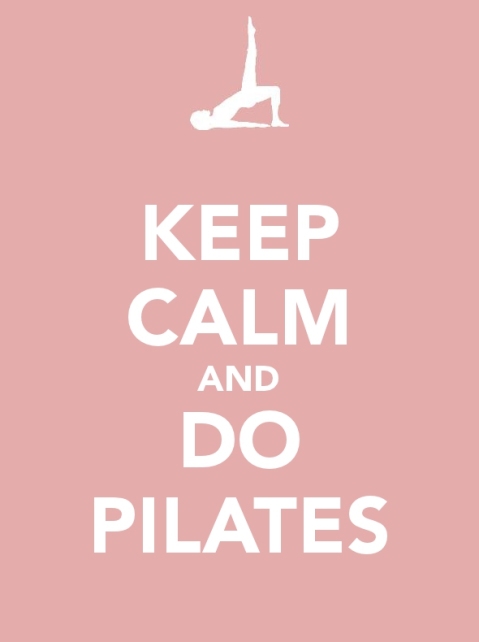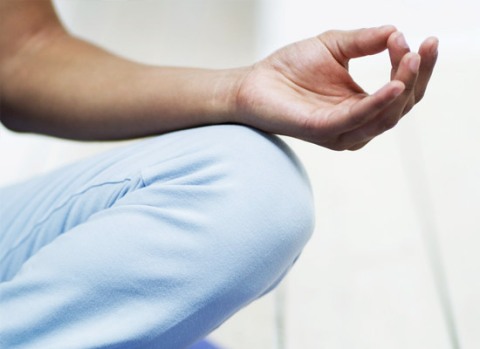Posts Tagged ‘recovery’

I can’t run to catch you anymore, F train!
After a year of hip pain, and four months of treatment for a misdiagnosed condition, I went to a new doctor and was finally accurately diagnosed with a labral tear in my right hip. I was gearing up to start treatment for my correct condition — scheduling appointments, calling my insurance company — but over the past few weeks my pain has gotten worse, so last week I went in for a check-up with my new doctor.
My right hip pain has been flaring up and my range of motion, which had been improving, has become more limited again. Also, I’ve been experiencing pain in the form of tightness and a burning sensation in my right calf (a side effect of having this injury is that it’s increased my vocabulary for describing pain, having had to repeatedly answer questions about my pain level and sensation — on a scale of 1 to 10, what is your pain level today? Is it dull? Numb? Aching? Burning? Throbbing? Stinging? Sharp and/or shooting?).
My doctor prescribed another MRI to see if something else is going on that’s causing my pain, in addition to the labral tear and tendonosis. So that’s my next step, and once I get those results, they will help determine how I should proceed with treatment.
In the meantime, I’ve been thinking about what I can and can’t do, having this injury. Not able to go to yoga now, I keep having flashbacks to a yoga class I took in the summer of 2011. I remember thinking during that class, as the sun streamed through the window, how grateful I was to be able to be doing yoga, sweating and happy and moving my body. I remember not taking it for granted, and actually fully appreciating that moment.
There were countless other times I took yoga classes for granted, assuming I’d always be able to go to challenging, vigorous, sweaty, mind-clearing classes. But I’m glad that I consciously appreciated at least one class. And I hope that one day I’ll be able to get back to yoga, and I know that I won’t take it for granted then.
These days, my injury flares up and calms down, is sometimes better and sometimes worse. But I haven’t had a treatment that has made it get better yet (although now that I have the correct diagnosis and will be getting more information from a second MRI, hopefully I will soon). So I’ve had to make adjustments to what I’m able to do, taking into account my current limitations.
Things I Can’t Do With My Injury
- Practice yoga. Any kind of yoga. Not even restorative.
- Put on pants without pain — it hits the edge of my range of motion
- Consistently walk without pain and an awareness of my hip. Some days I don’t notice it much, but other days I feel pain with every step I take.
- Get into and out of bed without thinking about it. I have to mindfully sit down on my bed, swing my legs up, and then lie down.
- Sleep on my right side
- Wear heels. Well, I can, and sometimes do, but the repercussions last for days.
- Wear flip-flops. I can wear them around my apartment for short periods of time, but if I wear them to walk somewhere outside, my foot starts hurting, and sometimes my calf pain feels worse. This may or may not be related to my hip issue. It could be a totally separate foot issue. But still, flip-flops = pain.
- Lift heavy things over my head, i.e. putting my suitcase on the overhead rack on the train. I now have to ask for/accept help. Frequently.
- Plunk down in chairs. That’s what pretty much started this injury in the first place. I have to be careful when I sit down and do it softly and slowly.
- Sit cross-legged in a meditative position. My right knee points straight up and can’t relax down to the ground like it used to in days of yore.
- Meditate. OK, technically I could find another position to mediate in besides sitting cross-legged on the floor, but mediating in that position is Pavlovian for me and I’m being stubborn and refusing to mediate any other way.
- Sit in my favorite writing/talking on the phone position, in my chair with my right leg tucked in
- Sit on the floor/ground. I went to a concert in the park this summer and was in pain for two days afterwards. I can sit on the floor with my legs tucked under me for about 10 minutes, at which point I have to stand up and search for a chair.
- Run to catch the subway
- Walk fast or rush in general
Things I Can Do With My Injury
- Pilates. A super-basic beginner class where all the students have injuries. Except when my pain is flaring up, I skip this, too.
- Physical therapy exercises — gentle strengthening and stretching. Although I stopped PT a few months ago when I wasn’t getting better and then discovered that I’d been incorrectly diagnosed so it wasn’t addressing what I actually had. Once I get the results from my second MRI I want to go back to PT, to treat my actual condition this time.
- Sleep on my left side
- Slow down. I usually don’t like doing this but it’s probably good for me, on a mental/emotional/spiritual level as well as physical.
- Get better at asking for/accepting help
- Connect with other people who are going through/have gone through similar things, and feel better mentally and emotionally as a result
- Practice taking good care of myself and paying attention to how I feel
- Ask questions, get information, trust myself, advocate for myself, and make good decisions
- Feel jealous — so jealous — of people who casually, effortlessly, pain-free-ly swing their legs into a cross-legged position
- Stay hopeful
Things I’m Not Sure About
- Given my range of motion limitations, I’m pretty sure that getting a bikini wax would be challenging and even more uncomfortable than it already is
- Sex is N/A at this point but I’m kind of curious if/how it will work if/when I meet someone I want to have sex with
Other/Misc.
On a side note, I went away this weekend. I left my busy life in Brooklyn and Manhattan, and traveled upstate to a country-esque setting (and on the train I had to ask multiple people to lift my suitcase onto the overhead rack and take it down). When I got back, I realized that although my hip still hurt, it was a lot better, and I had no pain in my calf.
This crystallized my realization that New York City living is tough when you have an injury. Commuting every day on packed subway, I often have to stand the whole way, tensing my body, surrounded by people squished into me. On top of that, people push and shove getting onto and off of the train, flailing their bags and bodies against my hip.
I have to pound the pavement walking to and from work, often in shoes that, even if they aren’t heels, aren’t properly supportive. I have to rush, dodge, brace, swerve, twist, and turn to navigate my daily route.
Upstate this weekend, I wore sneakers. I didn’t have to walk that far. And when I did, most of the time it was across soft, gentle grassy earth.
While I have no plans to give up city living for my injury anytime soon, I’m noticing just how hard the New York City hustle and bustle is on my body, and that there’s a cost to my joints. But at least for now, I can minimize this by doing a few things off my “Can Do” List — like paying attention and slowing way down.
If you have an injury, what can and can’t YOU do? How do you feel about having limitations? What simple activities do you no longer take for granted that you used to? Share your experiences in the comments!
I Was Misdiagnosed But Now I’ve Been Correctly Diagnosed and Cleared for Pilates
Posted on: September 30, 2013

Source: Parsley & Dill
In June, after having been diagnosed with hip bursitis earlier in the year, I had completed two months of physical therapy and gotten a cortisone shot, but my pain persisted and I still couldn’t do yoga.
What happened after that was, I got the second cortisone shot my doctored recommended, which was really the last one I could get, for awhile at least. And my pain got worse. I started having muscle spasms in both legs and pain in my right calf. Also, aside from bursitis, my physical therapist thought that there might be something wrong with my actual hip joint.
I called my doctor to tell him about my worsening symptoms. He was very friendly and upbeat, assuring me that nothing was wrong.
“Youshouldhaveafinehip,” he said.
“What?” I asked. I was taking notes, and didn’t want to miss anything important.
“You. Should. Have. A. Fine. Hip,” he said, overly enunciating every syllable.
I felt like I’d been punched in the stomach. The way he’d switched on a dime from warm and cheerful to cold and condescending made me feel like a little kid who was getting reprimanded. So I responded how I always do when someone speaks to me harshly and I feel immense discomfort: with excessive cheerfulness.
“Great, thanks!” I squeaked. “Have a great weekend!”
The next step was to get an MRI but in the meantime my doctor prescribed pain medication for me — at the highest possible dose. I’m very sensitive to medication and also have depression and anxiety, so I quickly experienced disturbing side effects. I felt spacey, disconnected, and checked-out, in addition to really sad and extremely anxious to the point of panic.
After a few days on the medication and feeling like I was jumping out of my skin, I had a meltdown at the pharmacy counter late one night asking through tears if I could stop taking it immediately or had to do it gradually.
“Stop!” the pharmacist said, handing me a tissue.
My gut, which felt like it had been punched after my last conversation with my doctor, was telling me to go to a different doctor. But I felt scared and people-please-y.
Maybe I should at least go back for one more visit and get the MRI through him, I thought.
The primary reason I didn’t want to go back to him was the way he’d talked to me that one time, which didn’t even seem logical. Maybe I was too sensitive or just overreacting.
But then I started to think about how he’d prescribed a pain medication at the highest dose allowed when I’m a fairly petite person who’s highly sensitive to medication. And then I started to think about how after four months of treatment including two cortisone shots, my injury wasn’t getting any better at all. I still felt nervous about not going to him anymore, though.
If I wasn’t trying to please someone else, what would I do? I asked myself.
The answer came loud and clear: Go to a different doctor.
So that’s what I did.
My new doctor didn’t think I had hip bursitis, the condition I’d been diagnosed and treated for over the past four months. She thought I had a labral tear in my hip, and prescribed an MRI.
Early on in my injury, I thought I had a lip labrum tear based on a conversation with my neighbor who had the same thing — her symptoms sounded exactly like my symptoms. At the beginning of this year, when I was experiencing these symptoms, Lady Gaga had a labrum tear in her hip and had to get surgery. My fear, going into my first doctor’s visit in April, had been that I would have a hip labrum tear and would have to get an MRI and surgery, and I was so relieved when I was diagnosed with hip bursitis and did not have to get an MRI.
I’d heard scary stories about MRIs — the enclosed space! The loud noise! — so by the time I got to the hospital for my appointment, I was terrified.
“Are you claustrophobic?” the pre-MRI questionnaire asked. I panicked. I didn’t know if I was claustrophobic. I had anxiety that could be pretty severe at times and didn’t want to discover I was claustrophobic while I was in there.
My MRI technician put me at ease though, talking to me through headphones throughout the session to let me know what was going on. Pretending I was in Savasana pose, I put one hand on my heart and the other on my belly and breathed. The noise was loud but repetitive and oddly soothing, and I fell into a calm, meditative state. By the time it was over I was almost asleep and totally relaxed.
The results of my MRI confirmed what my new doctor had suspected — I had a labral tear in my hip, and no bursitis at all.
A labral tear never heals, but there are things that can be done to manage or hopefully cease the pain, like stretching and strengthening.
After a very extended yoga hiatus and barely being able to do any physical activity all year, at my appointment where I got my MRI results, my doctor cleared me for Pilates right away (!).
Excited to get back to a class of any kind, I found a small Pilates studio a few blocks from where I live that offers a super-beginner level class. That Sunday, I put on yoga pants and a tank top, and sat down on a mat — similar to my familiar yoga mat — at the studio.
There were only four people in class, and before it started I talked to the instructor about my injury.
“I knew about Jen,” the teacher said, standing at the front of the room, “but are there any other injuries I should know about?”
Everyone raised their hands. There was a shoulder injury, a painful lower back, a knee thing.
So this is what it’s come to? I thought, laughing to myself. I used to do advanced yoga and now I’m in Pilates for injured people.
Although I stopped going to physical therapy a few months ago when my injury wasn’t improving, I’ll go back soon and incorporate that into my rehabilitation routine along with Pilates. Hopefully physical therapy will have more of an impact once it’s treating the correct condition.
For now, I feel happiness from my new Sunday afternoon Pilates ritual with a wonderful teacher who remembers what my injury is from week to week, tells me when I shouldn’t do a pose, and offers adjustments and modifications. And with my new — correct — diagnosis, I’m starting all over from the beginning, taking gentle, mindful baby steps on the slow road to recovery.
Yoga and Addiction Recovery
Posted on: April 23, 2012
- In: Yoga
- Leave a Comment
I wrote an article on TheFix.com about the benefits of yoga in addiction recovery. Check it out here:
